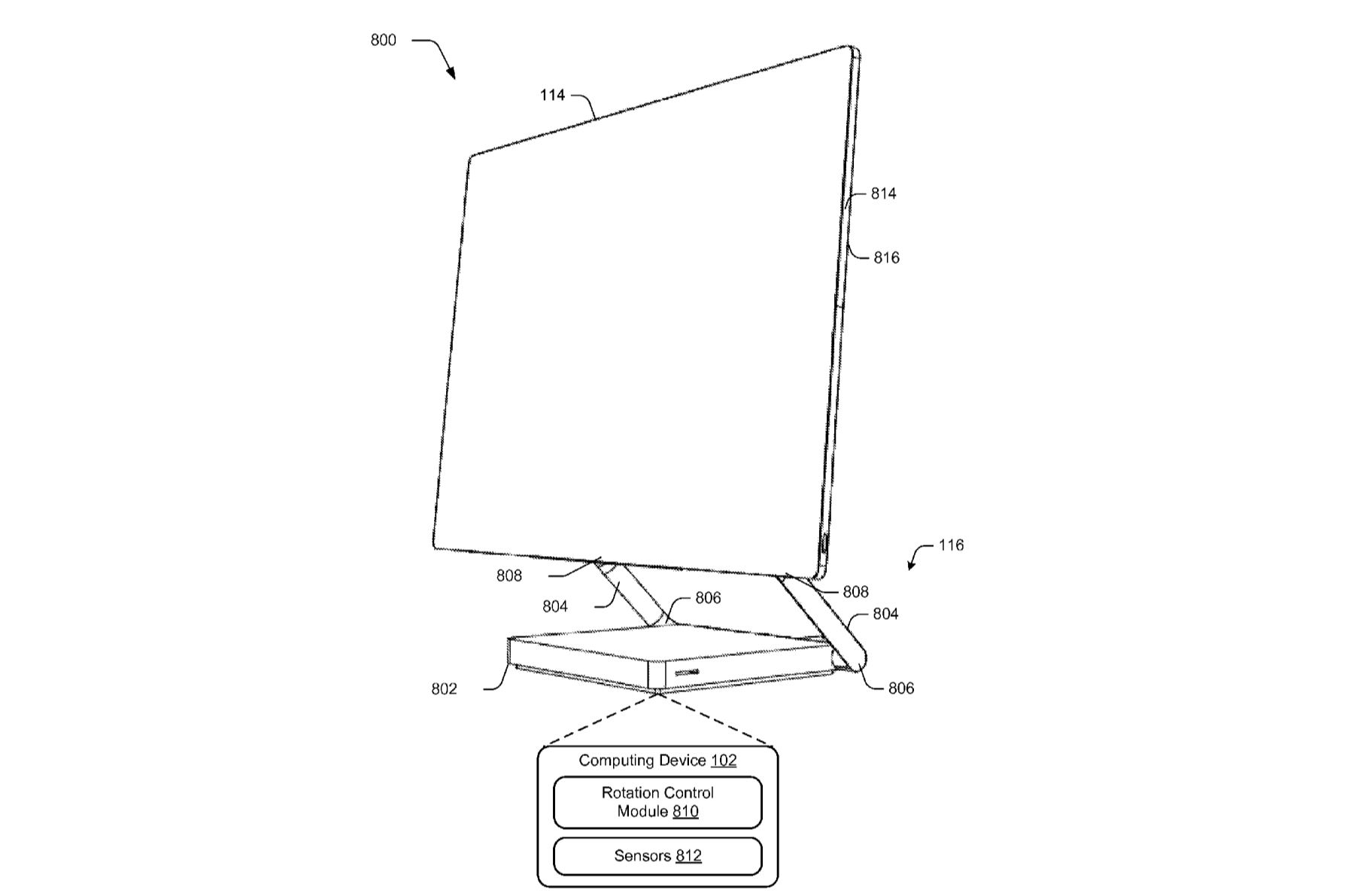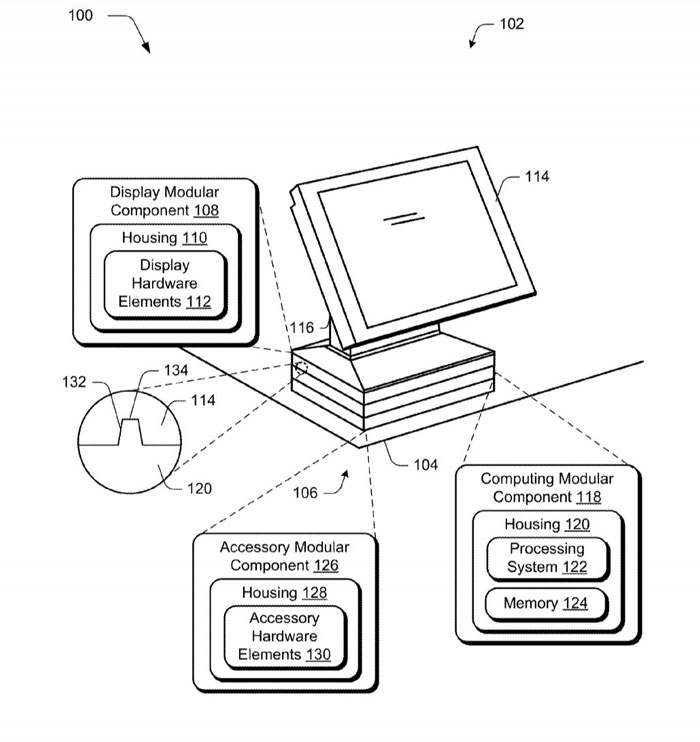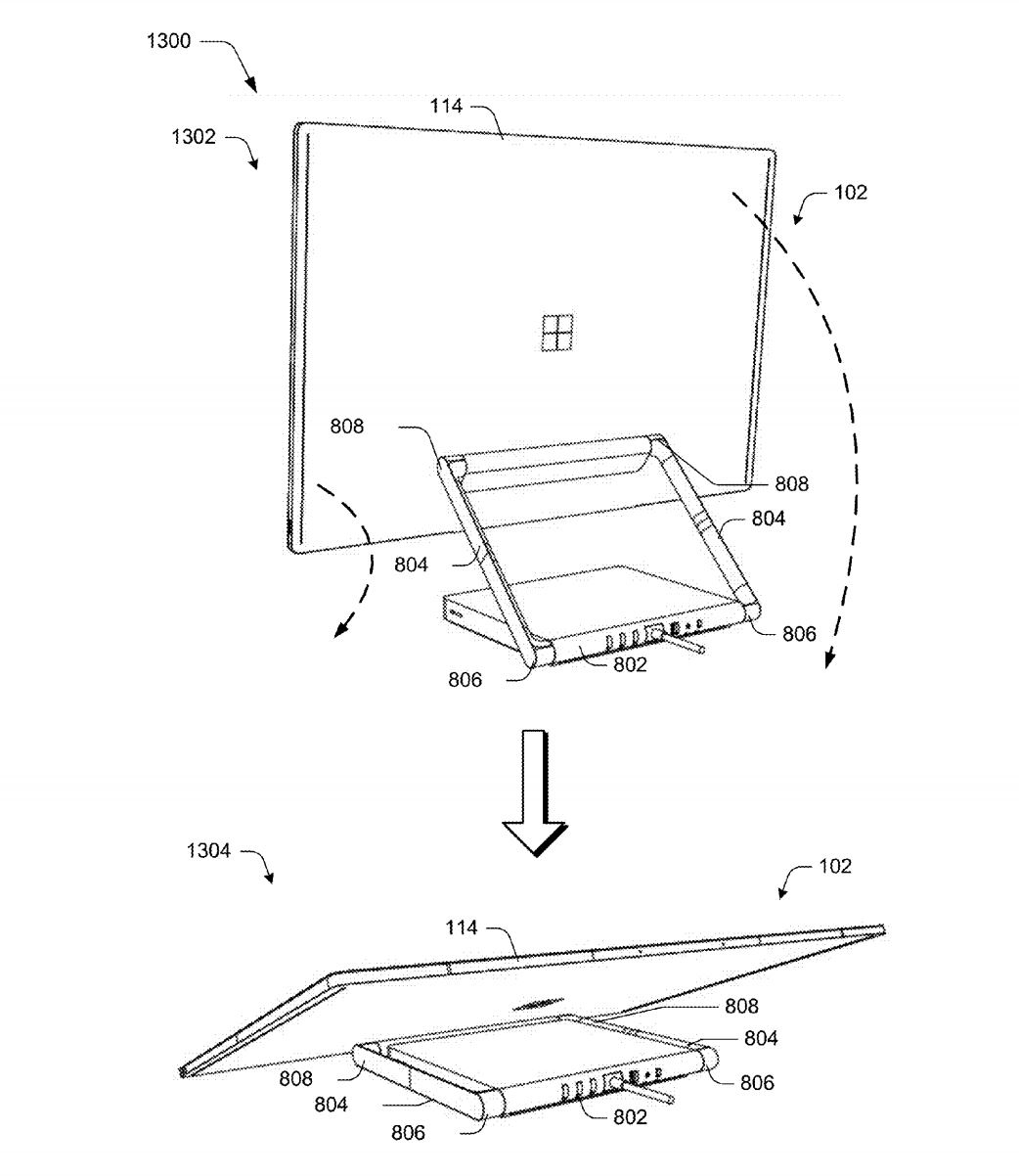Microsoft is getting ready to take on the Apple iMac with a modular Surface desktop All-In-One
Most of Microsoft’s investment and focus, in recent years, has gone into the design and production of Surface tablets and Surface Book, the company’s first hybrid laptop device, designed to take on Apple’s line of MacBook laptops.
Last week, a new patent filed by Microsoft may shed some light over the potential for Microsoft to challenge Apple desktop devices as well, particularly the iMac.
The patent, titled, “Modular computing Device”, describes a concept that has been attempted a number of times in the past decades, somewhat unsuccessfully, due to the limits posed by the technology of the time.

The modular design proposed in the patent, suggests that a display be mounted on a flexible mechanism, such as a hinge, or a stand, connected to a stack of interchangeable modules loaded with different hardware components designed to customize the PC’s capabilities according to different requirements.
For example, modules can be assembled to build a more powerful PC for office use, or gaming, and replaced with lower-specs modules for other less demanding tasks, such as Point-Of-Sale terminals, retail displays, and home theater applications.
The design is rather generic and lends itself to a variety of configurations and approaches. The big question, for a device of this kind, is how is Microsoft planning to create each one of these modules, and whether these will be “hot swappable” like flash drives and external peripherals.

It’s worth noting that this concept is rather ambitious, but not impossible, as it may involve a different approach to mainboard design, which will potentially require a mainboard size considerably smaller than any typical MicroATX design available, which will have to be constructed in such way as to allow the interchangeable integration of crucial components, including central core microprocessors, multiple, and stackable GPUs, memory modules, programmable chipsets, cooling mechanisms, and multiple, stackable Solid State Drive configurations.
By this token, this is not a design that true PC builders should be particularly excited about, as Microsoft isn’t likely to build these modules in a way that allows real system builders to customize the internals. With that said, regular consumers may one day be able to customize the specs of their desktop PCs with an “a-la-carte” approach, with the choice of different CPUs, GPUs, storage drives and multimedia hardware, to do exactly what they need.
Music professionals, for example, might be able to order modular components that integrate better audio hardware, and dedicated inputs and outputs, capable of connecting external digital and analog instruments for multi-track recordings and mixings.
Graphic designers, and motion graphic artists, on the other hand, may be able to order modules with advanced graphic hardware, like dedicated desktop-class nVidia GPU’s, as well as additional modules for motion capture and 3D scanning.

This concept can be made to be relatively “future-proof” as it doesn’t rely too heavily on components hard to replace, except for the display, which, in this case, appears to be the most expensive part of this modular concept, aside from other parts, like the power supply, which, depending on the type of module installed, must be able to be upgradeable as well, to be able to power the totality of the modules, such as advanced graphic hardware, and increasingly powerful CPU’s.
This is not a huge concern for most consumers, as in the majority of situations, performance requirements remain relatively conservative. Power users, however, such as professionals in fields where advanced computing is required, may need the assurance that stacking modules beyond a certain point will still allow for smooth operations, for instance in cases when it’s necessary to combine multiple nVidia GPUs via SLi, which also poses the question of how to cool down each module.
If this type of design becomes a reality, the potential for Microsoft to tackle Apple on the desktop front, could be considerable, especially if these systems offer a sufficient array of choices.